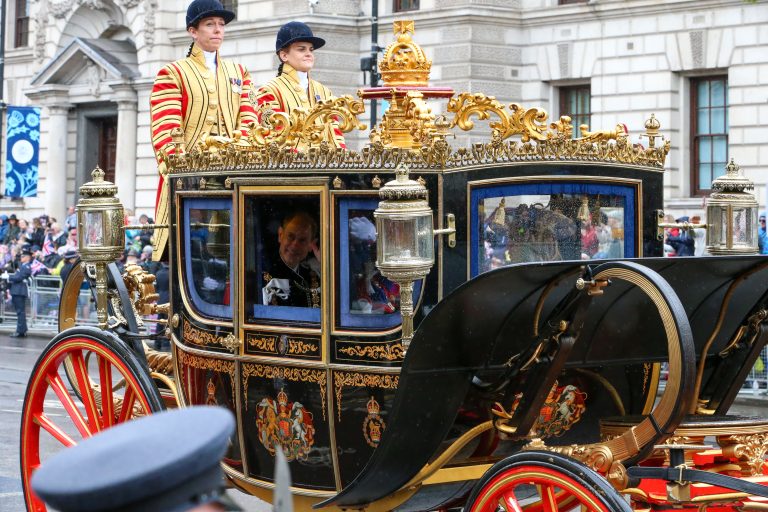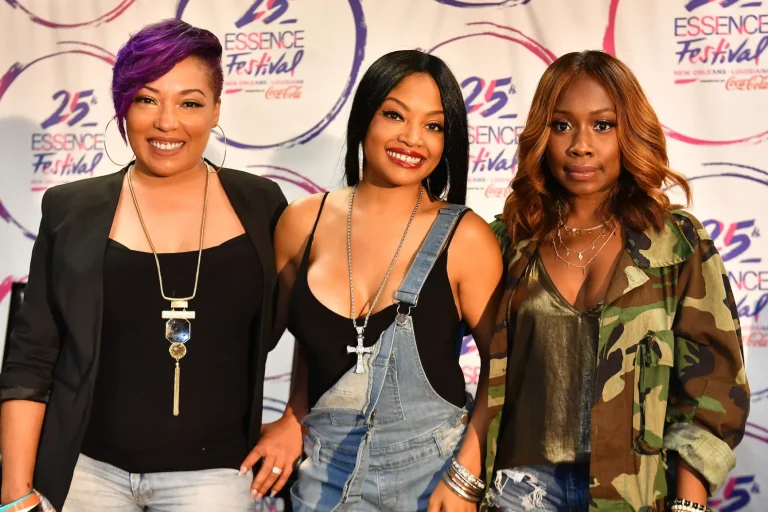

Ireland is more than just a picturesque landscape of rolling green hills, rugged coastlines, and ancient ruins. It’s a land steeped in history, rich with stories, and animated by traditions that have survived centuries of upheaval and change. Irish traditions are not merely relics of the past; they are living, breathing expressions of a unique culture that thrives in the hearts of the Irish people, both at home and abroad.
In the words of Terry McMahon, “Tradition isn’t stagnant; it’s a defiant dance in the face of modernity.” Ireland’s culture and traditions are deeply rooted in its history, its mythology, and its enduring spirit of community and creativity. Here, we explore the most famous and fascinating Irish traditions, from the well-known to the wonderfully weird.
What is the most famous Irish tradition?
The most famous Irish tradition is undoubtedly St. Patrick’s Day. Celebrated every year on March 17th, this global festival honors Ireland’s patron saint, St. Patrick, who is credited with bringing Christianity to the island. What began as a solemn religious occasion has evolved into a worldwide celebration of Irish heritage, complete with parades, traditional music, dancing, and plenty of Guinness.
In Ireland, the day is marked by vibrant parades, particularly in cities like Dublin and Cork, where the streets come alive with floats, performers, and revelers decked out in green. The shamrock, a symbol of the Holy Trinity, is worn proudly, and traditional Irish food like corned beef and cabbage often takes center stage.
For a deeper dive into this iconic celebration, visit Secret Ireland’s guide to Irish festivals.
What is important in Irish culture?

Irish culture is built on a foundation of community, storytelling, and a deep connection to the land. The Irish are known for their warmth, humor, and resilience, traits that have been forged through centuries of hardship and triumph.
Central to Irish culture is the Gaelic language (Gaeilge), which is experiencing a revival as more people embrace their linguistic heritage. Music, dance, and literature are also pillars of Irish identity. From the haunting melodies of traditional ballads to the intricate steps of Irish dance, creativity flows through every facet of Irish life.
Religion, particularly Catholicism, has played a significant role in shaping Irish values and customs, although modern Ireland is increasingly secular. However, the sense of spirituality and reverence for the past remains a vital part of the Irish psyche.
What are some of the customs in Ireland?
Irish customs are as diverse as they are charming. Some notable traditions include:
- The Irish Wake: A unique and heartfelt farewell to the deceased, featuring storytelling, music, and communal mourning.
- Ceilidh Dancing: A lively form of group dancing accompanied by traditional Irish music.
- Blessing of Homes: A practice where priests or elders bless homes for good fortune and protection.
Irish customs often blend humor and reverence, embodying the duality of Irish character—celebratory yet reflective.
What is the celebration of Irish culture?
The celebration of Irish culture is best embodied in festivals like St. Patrick’s Day, the Puck Fair, and the Galway Arts Festival. These events highlight the richness of Ireland’s artistic and social traditions, from literature and music to folklore and cuisine.
Ireland also celebrates its heritage through the Gaeltacht regions, where Gaelic culture thrives. Visitors to these areas can immerse themselves in Irish language workshops, traditional music sessions, and storytelling nights.
Learn more about these vibrant celebrations on Secret Ireland.
What are 5 facts about Ireland?
- Ireland is home to Newgrange, a prehistoric monument older than the pyramids.
- Halloween originated in Ireland, derived from the ancient festival of Samhain.
- The Irish harp is the national symbol of Ireland.
- Ireland has over 30,000 castles and ruins, a testament to its rich history.
- Irish pubs are renowned worldwide, offering more than just drinks—pubs are cultural hubs.
What are Gaelic traditions?
Gaelic traditions encompass the ancient customs of the Irish, including:
- Samhain, Imbolc, Bealtaine, and Lughnasa: Seasonal festivals marking the changing of the year.
- Hurling and Gaelic football: Traditional sports with roots in ancient Ireland.
- Irish storytelling (seanchas): The oral tradition of passing down history and myths.
These traditions are alive in modern Ireland, connecting people to their ancestral roots.
What do Irish people value most?
The Irish value family, community, and resilience. Despite the challenges of emigration and historical adversity, the Irish maintain strong ties to their homeland and kin. A deep appreciation for storytelling, humor, and music underscores the Irish way of life.
What is the most famous myth in Ireland?
The tale of Cú Chulainn, the warrior hero of the Ulster Cycle, is one of Ireland’s most famous myths. His superhuman strength, loyalty, and tragic fate resonate as a symbol of bravery and sacrifice.
What did the Irish do for fun?
Historically, the Irish found joy in storytelling, music, and dance. Today, these traditions persist, often in the warm embrace of an Irish pub. Sports like hurling and Gaelic football also bring communities together for spirited competition and celebration.
What are the 4 Gaelic festivals?
- Samhain: The end of the harvest and the Celtic New Year.
- Imbolc: Celebrating the arrival of spring.
- Bealtaine: A festival of fertility and light.
- Lughnasa: Honoring the god Lugh with feasts and games.
What is the Irish national culture?
Ireland’s national culture is a tapestry of language, music, mythology, and shared history. Its unique blend of ancient and modern influences creates a dynamic cultural identity celebrated worldwide.
What are the Irish traditions for mourning?
Irish mourning customs, particularly the wake, involve celebrating the life of the deceased through storytelling, music, and shared memories. Covering mirrors, opening windows, and keening are some rituals tied to these traditions.
What are some traditions and celebrations in Ireland?
From Christmas Eve midnight Mass to the Wren Day on December 26th, Ireland’s calendar is full of rich traditions. Local festivals like the Puck Fair showcase Ireland’s quirky charm.
What are the 4 Gaelic sports?
- Hurling
- Gaelic Football
- Handball
- Rounders
What is the biggest celebration in Ireland?
St. Patrick’s Day reigns as Ireland’s largest and most famous celebration.
Why do you cover mirrors at a wake?
Mirrors are covered at wakes to prevent the soul of the deceased from becoming trapped.
Do the Irish have a Day of the Dead?
The Irish equivalent is Samhain, a festival marking the boundary between the living and the dead.
What to say at an Irish wake?
Express heartfelt condolences and share stories that honor the deceased.
For more insights into Ireland’s traditions and celebrations, visit Secret Ireland.
What are some traditions and celebrations in Ireland?
Ireland is a country rich in traditions and celebrations, many of which have deep historical and cultural roots. These events and practices are vibrant expressions of Ireland’s enduring spirit and community values.
One of the most notable traditions is the Irish wake, a communal gathering to honor and celebrate the life of someone who has passed away. These wakes are filled with storytelling, music, and even laughter, as family and friends come together to remember the deceased. It is not merely a mourning ceremony but a celebration of life—a way to honor the departed while finding comfort in shared memories.
Another popular tradition is ceilidhs, social gatherings centered around Irish music and dance. These events often include group dances, such as the Siege of Ennis or the Walls of Limerick, performed to the lively tunes of fiddles, tin whistles, and bodhráns. Ceilidhs are particularly popular at weddings, festivals, and community events.
Ireland is also known for its unique festivals, such as the Puck Fair, held annually in County Kerry. This quirky celebration involves crowning a goat as “King Puck” and parading it through the streets as a symbol of good luck. The festival features live music, traditional food, and a carnival-like atmosphere.
The Wren Day, celebrated on December 26th, is another uniquely Irish tradition. Participants, known as “wren boys,” dress in costumes and masks and go door-to-door singing and playing music. This custom has roots in ancient Celtic rituals and has evolved into a joyful celebration of community and heritage.
From Halloween’s Celtic origins in Samhain to modern celebrations like the Galway Arts Festival, Ireland’s calendar is rich with traditions that reflect its unique cultural identity.
What are the 4 Gaelic sports?

Gaelic sports are an integral part of Ireland’s culture and traditions, governed by the Gaelic Athletic Association (GAA). These sports not only provide entertainment but also foster a sense of community and pride.
- Hurling: Often referred to as the fastest field sport in the world, hurling is a thrilling game played with a wooden stick (hurley) and a small ball (sliotar). Players showcase incredible skill, speed, and athleticism as they aim to score points by hitting the sliotar into the opponent’s goal or over the crossbar.
- Gaelic Football: This sport combines elements of soccer and rugby, with players using both hands and feet to pass, dribble, and score. Gaelic football is immensely popular in Ireland, drawing huge crowds to matches, especially during the All-Ireland Championship.
- Handball: A fast-paced sport played indoors or outdoors, handball involves hitting a small ball against a wall using one’s hand. It requires quick reflexes and excellent hand-eye coordination.
- Rounders: Similar to baseball, rounders is a bat-and-ball game that has been played in Ireland for centuries. It’s often enjoyed by children but also has competitive leagues for adults.
These sports are more than just games; they are symbols of Irish heritage and community spirit, with matches often serving as social gatherings for entire towns and villages.
What is the biggest celebration in Ireland?
The biggest celebration in Ireland is undoubtedly St. Patrick’s Day, a national holiday held on March 17th to honor the patron saint of Ireland. What began as a religious feast day has transformed into a worldwide festival celebrating Irish culture, heritage, and identity.
In Ireland, St. Patrick’s Day is marked by parades, festivals, and religious ceremonies. Cities like Dublin, Cork, and Galway host massive parades featuring floats, performers, and traditional Irish music. Families gather to enjoy hearty Irish meals, such as colcannon, Irish stew, and soda bread, while pubs overflow with revelers raising a pint of Guinness to toast the occasion.
The day’s festivities extend beyond Ireland, with iconic landmarks around the world “going green” to celebrate Irish heritage. From the Sydney Opera House to the Empire State Building, global participation highlights the widespread influence of Irish culture.
Why do you cover mirrors at a wake?
Covering mirrors at a wake is a deeply rooted Irish tradition with origins in folklore and superstition. The practice stems from the belief that mirrors can trap the soul of the deceased, preventing it from moving on to the afterlife. By covering mirrors, families ensure the soul’s safe passage and avoid any disturbances in the spiritual realm.
Another interpretation suggests that mirrors are covered out of respect for the deceased, as their spirit might linger and be startled by their reflection. This tradition also aligns with the idea that excessive vanity or self-reflection during mourning is inappropriate, emphasizing a focus on honoring the deceased.
While not as commonly practiced today, covering mirrors remains a symbolic gesture in traditional Irish wakes, reflecting the enduring influence of Ireland’s rich folklore.
Do the Irish have a Day of the Dead?
While Ireland does not have a Day of the Dead like Mexico, the ancient Celtic festival of Samhain serves a similar purpose. Celebrated on October 31st, Samhain marks the end of the harvest season and the beginning of winter. It is a time when the veil between the living and the dead is believed to be thinnest, allowing spirits to cross into the world of the living.
During Samhain, people lit bonfires, wore costumes to ward off malevolent spirits, and left offerings of food and drink to honor their ancestors. This ancient festival is the precursor to modern Halloween, which retains many of Samhain’s traditions, such as carving pumpkins (originally turnips) and dressing up in costumes.
In contemporary Ireland, Samhain is celebrated as a cultural and spiritual occasion, with events like bonfires and storytelling sessions reviving the ancient customs.
What to say at an Irish wake?
Irish wakes are deeply personal and communal gatherings, where words hold great significance. When attending a wake, it’s customary to offer condolences and share stories that celebrate the life of the deceased. Some examples of what to say include:
- “I’m so sorry for your loss. [Name] was a wonderful person who will be greatly missed.”
- “I remember the time [share a fond memory of the deceased]. [Name] always had such a great sense of humor.”
- “Please let me know if there’s anything I can do to help during this time.”
It’s also common to share prayers or blessings, reflecting Ireland’s spiritual traditions. Phrases like “May they rest in peace” or “Ar dheis Dé go raibh a n-anam” (May their soul be at the right hand of God) are heartfelt and respectful.
Storytelling is an integral part of Irish wakes, so don’t hesitate to share a meaningful or humorous anecdote about the deceased. This helps to celebrate their life and bring comfort to the grieving family.
Irish traditions and celebrations continue to inspire and connect people, blending history, culture, and community into a vibrant tapestry. For those looking to explore these customs further, visit Secret Ireland to delve deeper into the heart of Ireland’s heritage.
What are some Irish family traditions?
Irish family traditions are deeply rooted in the culture’s emphasis on community, faith, and storytelling, making family gatherings a cornerstone of Irish life. These traditions often revolve around celebrations, milestones, and a shared sense of identity.
- Sunday Dinner: In many Irish households, Sunday dinner is a time for extended family to gather, share a hearty meal, and catch up. Staples often include roast beef, lamb, or chicken served with potatoes (roasted, mashed, or boiled) and fresh vegetables. This weekly tradition fosters close familial bonds.
- Passing Down Stories: Storytelling is central to Irish family life. Elders pass down tales of family history, Irish folklore, and local legends to younger generations. These stories often blend humor, morality, and a deep appreciation for the past, ensuring that cultural and familial memories are preserved.
- First Holy Communion: For Catholic families, First Holy Communion is a significant milestone, often marked by a family celebration. Children dress in white to symbolize purity, attend Mass, and celebrate with a party afterward.
- Irish Weddings: Irish weddings are steeped in tradition, from the Claddagh rings exchanged by couples to the “tying of the knot,” a Celtic handfasting ritual. Ceilidhs (traditional dances) are a key feature of the festivities, as is a strong emphasis on music and community.
- Christmas and New Year: Christmas in Ireland is a time of religious and familial significance, with traditions such as lighting a candle in the window to symbolize hospitality for Mary and Joseph. Families gather for Midnight Mass on Christmas Eve and enjoy festive meals of turkey and ham. New Year’s traditions often include opening the front door at midnight to let the old year out and welcome the new one in.
Irish family traditions emphasize togetherness and continuity, reinforcing the values of love, respect, and heritage within the family unit.
What are Irish traditions for kids?
Irish traditions for children often center on fostering a love for culture, creativity, and community. From festivals to family activities, these traditions play a crucial role in shaping a child’s connection to their heritage.
- St. Brigid’s Day Crafts: Children learn to make St. Brigid’s crosses using rushes or straw to mark the beginning of spring. This hands-on activity connects them to Ireland’s agrarian roots and the story of St. Brigid, one of Ireland’s patron saints.
- Storytelling and Folklore: Irish children grow up hearing stories about mythical figures like Cú Chulainn, Finn McCool, and the Children of Lir. These tales not only entertain but also impart moral lessons and a sense of wonder.
- Participating in Gaelic Sports: From an early age, children are encouraged to play hurling, Gaelic football, and camogie. These sports teach teamwork, discipline, and pride in Irish traditions.
- The Wren Day Parade: On December 26th, children often dress up and participate in the Wren Day parade, singing songs and learning about the tradition’s Celtic origins.
- Irish Dancing: Many children take Irish dance classes, learning jigs and reels that they perform at local events or feiseanna (competitions).
These traditions are not only fun but also instill a deep sense of pride in Ireland’s cultural heritage.
What is important to the Irish culture?
At the heart of Irish culture is a profound respect for community, history, and creativity. These pillars shape the values, behaviors, and traditions of the Irish people.
- Hospitality: The Irish are renowned for their warmth and generosity. Welcoming guests with open arms is a hallmark of Irish culture, often accompanied by a pot of tea or a pint in the local pub.
- Connection to the Land: Ireland’s breathtaking landscapes play a vital role in its cultural identity. From the rugged beauty of the Wild Atlantic Way to the serene stillness of the Wicklow Mountains, the land inspires art, music, and literature.
- Storytelling: Whether through mythology, literature, or everyday conversation, storytelling is a cherished tradition. Writers like James Joyce, W.B. Yeats, and Seamus Heaney are celebrated for their contributions to Irish and global culture.
- Music and Dance: Traditional Irish music and dance are expressions of joy, resilience, and community. Instruments like the fiddle, tin whistle, and uilleann pipes are integral to Irish music, while dances like the jig and reel are performed worldwide.
- Faith and Spirituality: While modern Ireland is increasingly secular, religion—particularly Catholicism—continues to influence cultural practices and holidays. Additionally, ancient Celtic spirituality remains a source of fascination and reverence.
What’s important to the Irish culture is a blend of tradition, adaptability, and a deep-rooted pride in their heritage.
Irish Traditions Food: What are they?
Irish cuisine reflects the country’s agricultural heritage, with simple, hearty dishes that make use of local ingredients. Some traditional Irish foods include:
- Irish Stew: Made with lamb, potatoes, carrots, and onions, this one-pot dish is a comforting staple of Irish kitchens.
- Soda Bread: A quick bread made with buttermilk and baking soda, often served with butter or jam. Variations include sweetened versions with raisins.
- Boxty: A traditional potato pancake, particularly popular in the northern counties.
- Colcannon: Mashed potatoes mixed with kale or cabbage, often served with a knob of butter.
- Seafood: Ireland’s coastal waters provide fresh seafood like oysters, mussels, and salmon, often enjoyed in chowders or smoked preparations.
Traditional Irish food is more than sustenance—it’s a connection to the land and the people who cultivated it. Modern Irish cuisine continues to honor these roots while incorporating contemporary influences.
Irish traditions and celebrations are not just rituals; they are threads that weave together Ireland’s vibrant cultural fabric. From the everyday customs of family life to grand national celebrations, these traditions ensure that the soul of Ireland remains alive and thriving. To explore more about these practices and their historical significance, visit Secret Ireland and discover the magic that makes Ireland truly unique.





1 thought on “Irish Traditions? A Definitive Guide To The Spirit of Ireland”
Comments are closed.